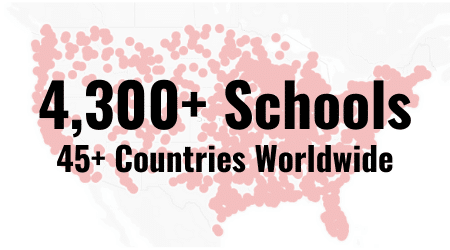Make Your Job Easier by Harnessing Positive Peer Pressure
Peer pressure is incredibly powerful, and that’s not always a bad thing. A substance abuse counselor once told me, “If I am having trouble reaching an adolescent in a one-on-one therapy session, I will send them to group therapy. There is no greater influence in an adolescent’s life than their peers, and group therapy is very successful in reaching our toughest kids!”
If group discussions can help teens break drug addictions, imagine the impact they can have on study skills!

“There is no greater influence in an adolescent’s life than their peers…”
Peer Groups Solve the Toughest Problems!
Group discussions are the most effective way to dig deeper into study skills and build mastery. I’ve referenced group discussions before; they are a powerful way to reach the reluctant learners in your class. When students hear their peers sharing success stories, and even setbacks, they pay attention!
This is how you harness positive peer pressure! Group discussions build trust. They make the strategies—and the benefits of those strategies—real to students. Even the challenges students bring to the table are useful, and the class can brainstorm real solutions to them.
Teaching Study Skills Effectively
Study skills take time and focus to master. I’m a big believer in sticking to the fundamentals when teaching study skills to students. But teachers often end up asking, “What do I do if I go through your content too fast?”
The answer to this question is a change of mindset. Teachers are used to covering content at the speed of light. The system is chock full of content standards, and the message it sends teachers is, “Faster, faster! More, more!”
With study skills, however, the focus should be on “content mastery,” not just “covering content.” Students need time to learn strategies, practice them, talk about them, get feedback, and try them again. This is really the best way to learn anything, but it is especially true for study skills.
How to Effectively Use Discussions in the Classroom
A good rule of thumb is to open every class, or every other class, with a 10 to 20 minute discussion. Discussion should focus on topics or strategies that students have had time to explore or practice on their own.
Always start with success stories! Ask the class, “What’s working? Tell me a success story!” You know your students; call on someone you know will give you a positive response.
The tone of a conversation is always set by the second person in the room to speak. You were the first to speak: you asked the question. Do what you can to ensure that the second speaker is positive. You can address problems in a few minutes. For now, you want to set an encouraging tone of possibility, not a negative tone of impossibility.
Once you have that first positive response, see if you can get two or three others. In the beginning, this may be tough. Students might be cautious about responding, since the environment of trust has not been fully established. That will take some time, but be patient. Let yourself be comfortable with silence. Eventually, you will get a few more students to speak up.
Next, ask students to share any problems, roadblocks, or frustrations they have experienced. This is where you will have the opportunity to build trust. Your early investment in these discussions, particularly your sensitivity to challenges, will determine your success with class discussions for the rest of your time together! When a student shares a concern, acknowledge it. Work with him or her, and the rest of the class, to brainstorm solutions.
These discussions may seem slow at first, but don’t be fooled! Group discussions are the most powerful element of your class time. As the teacher, you may feel like you are not doing enough. That’s exactly how you should feel. This is the time to turn responsibility over to your students. It might take some getting used to!
Conclusion
The education system tends to create a culture of “over-teaching.” When it comes to study skills, however, you should focus on depth over breadth. Make sure your students are able to apply the content to their work and to managing their lives.
Group discussions will make your job easier by harnessing the power of positive peer pressure. When executed with a dash of strategy and a bit of patience, class discussions are your most powerful tools for building trust, encouraging students to take risks, and helping them help each other be successful!
Make your life easier and their life more successful. Get the SOAR® Study Skills curriculum here.
-Susan Kruger
EB 050817
Six Steps to
Conquer the Chaos
Get Our Free Guide & Information on...

"*" indicates required fields
SOAR® in the News
The SOAR® Curriculum
The most critical learning, organizing, and communication skills needed for school. Learn more here.
Who’s Using SOAR®?
SOAR® Guarantee
Click here to learn more.




